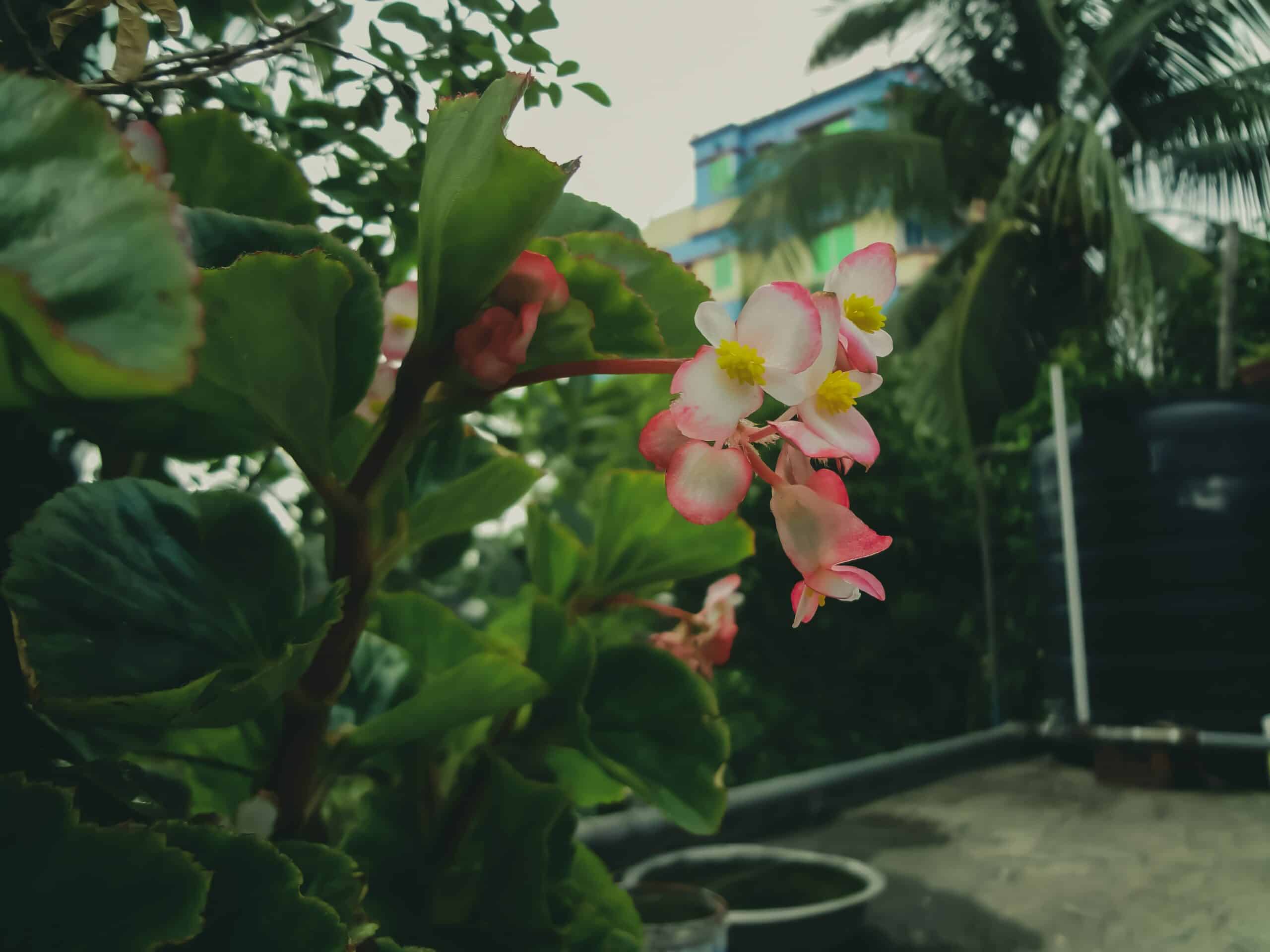The wax begonia is a beautiful and hardy plant that is incredibly popular among gardeners. It’s easy to see why – the lush foliage and vibrant flowers provide a stunning display of color that can be enjoyed indoors or outdoors. Not only are these plants aesthetically pleasing, they are also very low maintenance and require minimal care. In this article, we’ll explore the best way to care for wax begonias so you can enjoy their beauty for years to come.
When it comes to caring for wax begonias, there are few things more important than proper light and water requirements. Wax begonias need plenty of indirect sunlight in order to thrive, but too much direct sunlight can cause them to wilt or even die. Additionally, they must be watered regularly – not too much and not too little! With the right balance of light and water, your wax begonia will thrive and give you many years of enjoyment.
Finally, proper planting techniques are key when it comes to growing healthy wax begonias. You’ll want to make sure that you’re using the right soil mix and keeping an eye on drainage issues in order to ensure that your plant has the best chance of success. With the right knowledge and preparation, you’ll be well on your way to cultivating a beautiful wax begonia for yourself!
What Is A Wax Begonia?
A wax begonia is a flower like no other. It’s an explosion of color, texture, and beauty that stands out in any garden or home. Its lush leaves and unique flowers captivate the eye and leave you in awe of its brilliance. It’s truly a sight to behold!
Wax begonia (Semperflorens Begonia) are native to Brazil and are known for their bright colors, thick foliage, and remarkable resilience in both sun and shade. The leaves have a waxy coating that protects them from extreme temperatures and drying winds. They come in many colors including pink, white, red, yellow, orange, purple, lavender, peach and salmon. The flowers are usually small but can come in larger sizes depending on the variety. They bloom all summer long with minimal care needed to keep them looking their best.
These plants thrive indoors or outdoors as long as they receive adequate sunlight and moisture; however, they prefer shade in hot climates as too much direct sun will cause the leaves to scorch or fade. To ensure your wax begonia continues blooming throughout the season be sure to fertilize it regularly with a balanced fertilizer such as fish emulsion or liquid seaweed extract. To keep its shape prune it back after each flowering cycle has finished before it starts to look overgrown. With proper care your wax begonia will be an elegant addition to your garden for years to come!
Where To Plant Wax Begonia
Picking the right place to plant wax begonias is essential for their success. To ensure they thrive, it’s important to consider the amount of sunlight they need, along with any potential obstacles that could impede their growth. Placing these beautiful flowers in the right spot can be likened to a game of chess – you’ll need some foresight and strategy. Here are 5 tips to help you select the perfect spot:
First and foremost, wax begonias require plenty of bright light, but not too much direct sunlight. If possible, find a location that gets morning sun but is shaded from the hottest part of the day. This will give your plants enough light without risking exposure to scorching rays.
Next up, make sure there are no objects obstructing the area where you want to plant. If your chosen spot is surrounded by trees or shrubs, trim them back if necessary so that there’s sufficient airflow and light for your begonia plants. In addition, watch out for low-hanging branches that could potentially impede growth or create unwanted shade.
Finally, it’s always a good idea to check the soil before planting anything in it – wax begonias aren’t picky when it comes to soil type, but drainage should never be an issue since they don’t like wet feet! A well-draining potting mix will do just fine; adding compost or other amendments may also help improve fertility levels if needed.
Find a spot with bright indirect sunlight; make sure there are no obstructions; check drainage; trim back any nearby trees/shrubs; add compost/amendments if necessary – following these tips will help ensure your wax begonias get off on the right foot!
Soil Requirements For Wax Begonia
In the garden of life, soil is to plants what food is to us – the essential foundation that allows them to thrive. Just as a balanced diet is necessary for our health, so too is a well-drained soil with plenty of organic matter for wax begonias.
Soil requirements are an important part of growing wax begonias indoors. The ideal mix should be loose and airy, allowing water to easily pass through while retaining some moisture. It should also be slightly acidic, with a pH level between 5.5 and 7.0; this helps promote healthy roots and stems, which are essential for lush blooms and vibrant foliage.
When it comes time to fertilize your wax begonia, look for one that’s specifically formulated for acid-loving plants. This type of fertilizer will help maintain the optimal pH balance in the soil while providing all the necessary macro- and micro-nutrients that these beautiful plants need to stay healthy and strong. With proper care, you can ensure your wax begonias will bring joy with their lush blooms all year round!
By understanding these soil requirements and following them closely, you create a strong foundation for your wax begonias which then allows you to focus on other aspects of plant care such as light requirements for further success.
Light Requirements For Wax Begonia
Light and dark. These two seemingly opposing forces are essential for wax begonia plants to thrive. While a little bit of both is required, the balance needs to be just right. Let’s explore the light requirements for these beautiful blooms.
When it comes to lighting, wax begonias like bright but indirect sunlight. This means they should be placed in an area that gets plenty of natural light but isn’t directly exposed to the sun’s rays. To ensure your wax begonia is getting enough light, you can position it near a window where it will receive direct sun for only part of the day or use artificial lighting like fluorescent bulbs or LED lights.
No matter which option you choose, make sure your plant receives 12-14 hours of light each day during its growing season and 8-10 hours during its dormant season. If your begonia doesn’t get enough light, it won’t flower properly and could even become weak and limp. Too much light can also be detrimental to your plant as it can scorch its delicate leaves and cause them to yellow or brown at the edges.
By striking this delicate balance between sunlight and shade, you can ensure your wax begonia remains healthy and in bloom year round!
Water Requirements For Wax Begonia
Watering a wax begonia is like pouring water through a sponge: it needs to be done slowly and with care. Like any other indoor plant, wax begonias need regular watering to stay healthy and thrive. However, they are quite sensitive to overwatering and can easily suffer root rot or other issues as a result. To keep your wax begonia happy, it’s important to understand the ideal watering conditions for this type of plant.
When it comes to watering your wax begonia, it’s best to err on the side of caution. Allow the soil to dry out completely between waterings; about once every 7-10 days should suffice. If you’re in a particularly warm climate, you may need to water slightly more frequently than this. Touch the soil before you water; if there is still moisture present, then it isn’t time for another drink yet! Additionally, avoid wetting the foliage as much as possible since this can lead to fungal problems down the line.
When it’s time for a drink, make sure that you thoroughly wet the soil so that all roots get adequately hydrated—you want them all drinking up just enough moisture! Try not pour too much though; excess water should be drained after 15 minutes or so of soaking in order to avoid root rot. With these tips in mind, you’ll be able to provide your wax begonia with just the right amount of hydration! Now that we have looked at how and when to water your wax begonia, let’s move on and explore how best to fertilize and feed this beautiful plant.
Fertilizing And Feeding Wax Begonia
Fertilizing and feeding wax begonias is an essential part of their care, and when done correctly, it will help maintain healthy blooming. For example, one gardener had a wax begonia in her home for years that was growing beautifully and producing abundant flowers—all thanks to the proper fertilization routine she followed.
When fertilizing wax begonias, you should use a balanced fertilizer with equal amounts of nitrogen, phosphorus, and potassium. This should be applied every other week while they are actively growing. Additionally, it is important to be aware of the amount of fertilizer you are adding; too much can damage the plant’s roots or foliage. You may also want to supplement with liquid fertilizer during periods of active growth to ensure your plants get enough nutrients.
Overall, providing the correct type and amount of fertilizer for your wax begonia is critical for its health and bloom production. When done properly, you can expect beautiful blooms all season long! With proper fertilization in place, you can now move on to propagating and growing these lovely plants.
Propagating And Growing Wax Begonia
Coincidentally, propagating and growing wax begonia is the next step in nurturing these plants for optimal health. Wax begonias can be propagated in two ways: from stem cuttings or from division. Taking stem cuttings is a straightforward way to propagate wax begonias – just snip off a healthy stem with leaves and place it in moist soil. The division method involves cutting apart the plant’s root system, as well as any smaller offsets of the plant. This is an easy way to get multiple plants out of one existing wax begonia.
Once you have your new wax begonias planted, you’ll need to give them what they need to thrive. Provide adequate light, water, and fertilizer for best results. Water when the surface of the soil feels dry and fertilize every two weeks during active growing periods with an all-purpose fertilizer. Keep in mind that too much direct sunlight can burn their delicate foliage so choose a spot that gets morning sun with some afternoon shade for them if possible.
Finally, your new wax begonias will also need some occasional pruning to help maintain their shape and encourage new growth – but more on that later!
How To Prune Wax Begonia
Pruning wax begonia can be like sculpting a masterpiece – it requires patience, attention to detail, and an eye for beauty. To get the most out of your plants, here are a few key points to keep in mind: • Take care to use sharp, clean tools when pruning. • Cut back stems that are no longer flowering or producing leaves. • Prune regularly to encourage new growth and shape the plant as desired.
When it comes to pruning wax begonias, timing is everything. It’s best to prune them in early spring or late summer when they’re not actively blooming. This will give the plants time to recover before their next flowering period. If you do need to prune during a growth cycle, make sure you don’t remove too much foliage at once as this could cause stress for the plant and affect its overall health.
After you’ve trimmed away any dead or overgrown stems, it’s important to properly dispose of them. This ensures that any diseases from the cuttings don’t spread into your garden beds or other plants. So take care when handling your clippings and remember to compost them if possible! With these simple tips in-mind you’ll be able to create a stunning wax begonia display with ease! Transitioning smoothly into the subsequent section about common problems with wax begonias allows readers a better understanding of how they can avoid potential issues while caring for their plants.
Common Problems With Wax Begonia
The wax begonia is like a precious work of art, its vibrant colours and texture bringing a satisfied smile to the face of any admirer. But with all works of art, there come some problems that can threaten its beauty and life. This section will discuss the common issues with wax begonias so you can keep your plant looking perfect.
When caring for wax begonias, it is essential to be aware of certain pests that may attack them. aphids, mealybugs, mites, and whiteflies are all examples of bugs that can cause damage to the leaves and stems of your plant if they’re not taken care of quickly. Additionally, over-watering or lack of watering can also cause leaves to yellow or droop. Too much direct sunlight or too little sunlight can also lead to discoloration and wilting in the plant’s foliage.
Fortunately, these common problems are manageable with proper care and attention. You must be vigilant about monitoring your plant for signs of pests or infection and take steps as soon as possible if anything arises. Additionally, make sure you water your wax begonia regularly but don’t overwater it; this will help ensure that it has enough moisture without becoming bogged down by too much water. Finally, find an area with moderate light where it won’t receive too much sun or too little light. With these measures in place you can keep your wax begonia looking healthy for years to come!
Pest Control For Wax Begonia
Pest control for wax begonia is a crucial step in keeping your plant healthy. It’s like a defensive shield against any potential problems that could arise. As if you were donning armor, taking this extra precaution will ensure that your begonias stay blooming and beautiful all season long.
When it comes to pest control, prevention is key. Keep an eye out for any signs of pests, such as wilting leaves or discoloration. If you spot an infestation early enough, you can take steps to eliminate the problem before it gets too out of hand. This includes removing affected leaves and stems and applying insecticides specifically formulated for use on plants.
You can also take some preventive measures to reduce the chances of pests attacking your begonias in the first place. Make sure to provide adequate air circulation around the plant, water regularly but not too much, and keep your begonias away from overly moist environments or areas with standing water. Following these simple steps will help you keep your begonias looking their best all year round.
These precautions will go a long way towards ensuring that your wax begonia remains in peak condition – ready to come alive with vibrant blooms! Next up, we’ll be discussing containers suitable for growing wax begonia so you can show off their beauty in style!
Containers For Growing Wax Begonia
When it comes to growing wax begonia, there’s one important element that should never be overlooked: the container. An ideal home for this delicate plant must be both aesthetically pleasing and provide enough space for its roots to expand. Picture a beautiful glazed pot in shades of blue, green, or brown with a spreading begonia nestled inside – a sight that could easily charm anyone.
Besides aesthetic value, there are several other factors that you need to consider when selecting the perfect vessel for your begonia. Here is a list of key points to keep in mind:
- Size: The size of the pot should correlate with the size of the mature plant. A small 4-inch pot is sufficient for young plants, while larger 6-inch pots should be used when they reach maturity.
- Drainage: The pot must have holes at the bottom to allow excess water to escape and prevent root rot.
- Material: Clay or terracotta pots are great options as they allow air circulation around the roots and help keep them cool during hot weather. Plastic containers might also work as long as they’re lightweight and have adequate drainage holes.
These simple yet effective guidelines will ensure you get a container that’s both functional and visually appealing for your wax begonia!
Temperature Requirements For Wax Begonia
The temperature requirements for wax begonia are the icing on the cake. Like any other plant, it needs the right conditions to thrive. When it comes to temperature, begonias have a sweet spot of 65-75°F during the day and slightly cooler at night. If temperatures dip below 60°F or rise above 80°F, you may find your plants wilting and struggling.
To ensure your begonias remain healthy and happy, keep them away from cold drafts, air conditioners and radiators. If needed, use a fan to keep air moving throughout the room. This will help keep temperatures relatively consistent while providing additional humidity that wax begonias love. Additionally, consider investing in a thermometer so you can check the temperature easily before watering or fertilizing.
With these simple tips and tricks in mind, you can give your wax begonia the perfect environment to grow big and strong! Now that you know how to create an ideal climate for these plants at home, let’s take a look at how to make them part of your landscaping design.
Using Wax Begonia For Landscaping
Wax begonia is a beautiful and vibrant flower that can be used to enhance your landscaping. It’s easy to grow, low maintenance, and adds a great pop of color to any landscape. If you’re looking to add wax begonia to your landscaping, here are some things you should know.
When planting wax begonia outdoors in a garden, be sure to choose an area with partial sunlight or filtered shade. The soil should be light and well-draining, with plenty of organic material mixed in for good nutrition. Planting wax begonias near other flowering plants can help create stunning displays of color and texture in the garden.
When caring for wax begonias outdoors, remember that they need regular watering but should never be overwatered. Make sure the soil stays moist without becoming soggy or waterlogged by using mulch around the base of the plant. You may also want to fertilize occasionally with a balanced fertilizer according to manufacturer instructions. With proper care, these plants will bloom profusely all summer long.
Whether you’re planting indoors or out, wax begonias can add a lot of visual interest to any space. With their colorful foliage and attractive blooms, they make a great addition to any garden or landscape design! Now that you know how to use them for landscaping purposes, let’s look at how to bring them indoors when temperatures drop in wintertime.
How To Bring Wax Begonia Indoors
Bringing wax begonias indoors is a great way to enjoy their beauty all year round. With just a few simple steps, you can bring the natural beauty of these plants into your home. Here are some tips for how to get started:
First, it’s important to choose the right pot for your wax begonia. Choose one that has plenty of drainage holes in the bottom and is slightly larger than the plant itself. This will give it enough space to grow and thrive.
Next, make sure you have a good quality soil mix that is designed for indoor plants. You may need to supplement with additional nutrients like compost or fertilizer if needed. Finally, provide adequate light and water for your wax begonia so it can stay healthy and vibrant indoors.
These steps should ensure that your wax begonia stays happy and healthy inside your home. But what if something goes wrong? Troubleshooting tips can help you figure out what might be causing issues with your plant so you can take corrective action quickly and easily.
Troubleshooting Tips For Wax Begonia
When it comes to houseplants, wax begonias bring an unmistakable charm and beauty to any home. In fact, according to recent statistics, over 50% of all households have at least one houseplant in their living space. With such a large number of people having these plants around, it’s important to know how to troubleshoot any possible issues that may arise.
The good news is that wax begonias are fairly easy to care for and resilient against typical problems. However, there are certain things you should be aware of when it comes to these plants in order to make sure they stay healthy and happy. To help with this, we’ve put together a list of troubleshooting tips for wax begonias that can be useful if you experience any issues with your plant.
For instance, a common problem is leaf discoloration caused by too much direct sunlight or not enough water. To fix this issue, simply move the plant away from direct sunlight and check the soil with your finger for moisture levels twice per week. Another issue may occur if the leaves become limp or wilted due to lack of humidity – in this case, misting the leaves daily can help keep them hydrated and healthy. Finally, if your wax begonia has yellowing leaves or stunted growth it could be due to nutrient deficiency – supplementing the soil with fertilizer can help improve overall health and vigor of the plant.
By following these troubleshooting tips for wax begonia plants you should be able to keep your plant healthy and thriving indoors all year round! From proper watering techniques to supplementing fertilizers, there are plenty of strategies you can use to ensure your wax begonia is always looking its best.
Frequently Asked Questions
What Is The Best Soil For Wax Begonia?
According to the American Begonia Society, Wax Begonias are one of the most popular and widely grown species of begonia. This is due in part to their ease of care and vibrant colors that range from white to pink to deep red. To ensure that your wax begonias thrive, it’s important to use the best soil for them.
Did you know that wax begonias prefer a well-draining soil? This helps prevent root rot, which can be a common problem with this species of begonia. The ideal soil should be made up of equal parts peat moss, vermiculite, and perlite. Here are some other tips for choosing the right soil:
• Addition of Fertilizer: Incorporate a small amount of slow-release fertilizer into the soil mix when planting new wax begonias.
• pH Level: Aim for a slightly acidic pH level between 5.5 and 6.5 to help promote healthy growth.
• Soil Composition: A mixture of potting soil and compost is ideal for creating a nutrient-rich environment that will provide your wax begonias with all they need to flourish.
Giving your wax begonia plants the best possible growing environment is key to keeping them healthy and beautiful throughout the year! To achieve this, make sure you use good quality potting soil with proper drainage and adjust the pH level as needed for optimal results. Additionally, don’t forget to add a small amount of slow-release fertilizer when planting your new begonias in order to give them an extra boost in nutrition!
How Often Should I Fertilize Wax Begonia?
Fertilizing your wax begonia is an essential part of its care. But how often should you be feeding it? This can be tricky to figure out, even for experienced gardeners. One way to think about it is that fertilizing your wax begonia is like giving it a vitamin supplement. Just as you wouldn’t want too much of a good thing, you don’t want to overfeed your wax begonia either.
The key is finding the perfect balance between under- and over-fertilizing. A data point that can help guide you in this endeavor is that a good rule of thumb is to fertilize the plant every two weeks during the growing season and once a month when it’s dormant. Of course, if your plant shows signs of nutrient deficiency like yellowing leaves or stunted growth, you may need to increase the frequency of your feedings.
It’s also important to make sure that you’re using the right kind of fertilizer for your needs. Generally speaking, an all-purpose fertilizer with balanced amounts of nitrogen, phosphorous and potassium will do just fine for wax begonias. If possible, try to find an organic fertilizer with micronutrients like iron and magnesium as well – these can really help give your plant an extra boost!
TIP: If you’re ever unsure whether or not it’s time to fertilize your wax begonias, simply check the soil moisture levels first – if they’re dry, then it’s probably time for another feeding!
How Do I Prevent Wax Begonia From Getting Too Tall?
When caring for wax begonias, it’s important to be aware of how tall the plant can get. If left unattended, the plant may grow too tall and become difficult to manage. To prevent this, there are a few simple steps you can take.
First, be sure to trim your wax begonia regularly. Trimming helps keep the plant from getting too tall and promotes bushier growth. When trimming your begonia, use sharp scissors or pruners and make sure to remove any dead or wilted leaves. This will help encourage new growth.
Second, it’s important to give your wax begonia enough sunlight and water. The soil should remain moist but not wet throughout the summer months. During the winter months, water less often as the plant needs time to rest. Additionally, position your wax begonia near a window that receives at least six hours of indirect light each day so it can get adequate sun exposure.
By following these tips, you’ll be able to maintain a healthy wax begonia while also keeping it from getting too tall. With regular care and attention, you’ll have a beautiful display of blooms indoors all year round!
Are Wax Begonia Toxic To Pets?
Are wax begonia toxic to pets? It’s an important question for pet owners. While attractive wax begonias can add a splash of color to your home, it’s crucial to know what the potential risks are.
First and foremost, wax begonias are not toxic to cats and dogs. They won’t cause any adverse reactions if ingested. But that doesn’t mean they should be eaten; the leaves may contain small amounts of sap and oils that can upset your pet’s stomach.
So, how do you keep your pet safe around wax begonias? Here’s a few tips:
- Place the plant in an area where it cannot be reached by curious paws or mouths.
- Keep the soil moist but not overly wet as this can attract pests like slugs which could be harmful if ingested by pets.
- Regularly check for signs of pests or disease on the leaves and stems of your wax begonias to ensure your pet remains safe from any potential contaminants.
The bottom line is that while wax begonias are not toxic to cats or dogs, they should still be treated with caution and care to prevent any potential harm coming to our furry friends. With proper precautions in place, you can enjoy having these beautiful plants in your home without worry!
What Type Of Light Is Best For Wax Begonia Indoors?
Many plant owners are curious about the type of light that is best for wax begonia indoors. Is it possible to provide the same level of lighting indoors as outdoors? This theory can be investigated, and in doing so, we will see what kind of light is best for this popular houseplant.
One way to investigate this theory is to look at the natural environment in which wax begonias grow in the wild. In their native tropical habitat, they typically receive bright, indirect sunlight all day long. This means that when kept inside as a houseplant, they should also receive bright, indirect sunlight or a full-spectrum fluorescent bulb. It’s important to avoid placing them near a window where direct sunlight will hit them directly, as this could burn their leaves.
Although wax begonias prefer bright light, it’s important not to overdo it. If your home does not have enough natural light streaming through the windows, you may need to supplement with an artificial source. A north-facing window provides a perfect balance of both direct and indirect light for your wax begonia to thrive indoors. With just the right amount of light and regular watering, you can keep your plants looking beautiful all year round!
Conclusion
In conclusion, the Wax Begonia is a beautiful and versatile plant that can thrive indoors. With proper care, these begonias can bring life to any living space. When caring for your Wax Begonia, it is important to properly choose the right soil, fertilize regularly, and provide adequate light. Additionally, you should make sure to prune any overly tall stems in order to keep the plant compact and healthy. Finally, be aware that this plant may be toxic to pets if ingested, so take necessary precautions.
The adage “An ounce of prevention is worth a pound of cure” applies perfectly here. Taking the time to properly care for your Wax Begonia from the start will help ensure its future health and beauty. It may seem like extra work now but in the long run you will reap the rewards of your effort when you have a lush and vibrant Wax Begonia on display in your home.
Overall, with just a little bit of knowledge and care you too can enjoy having a flourishing Wax Begonia as part of your home décor!
















![How To Clean A Wax Warmer 27 [1425] Wax Moth (Galleria mellonella)](https://green-life.blog/wp-content/uploads/2023/05/TlTgCqusrajq-150x150.jpg.webp)












